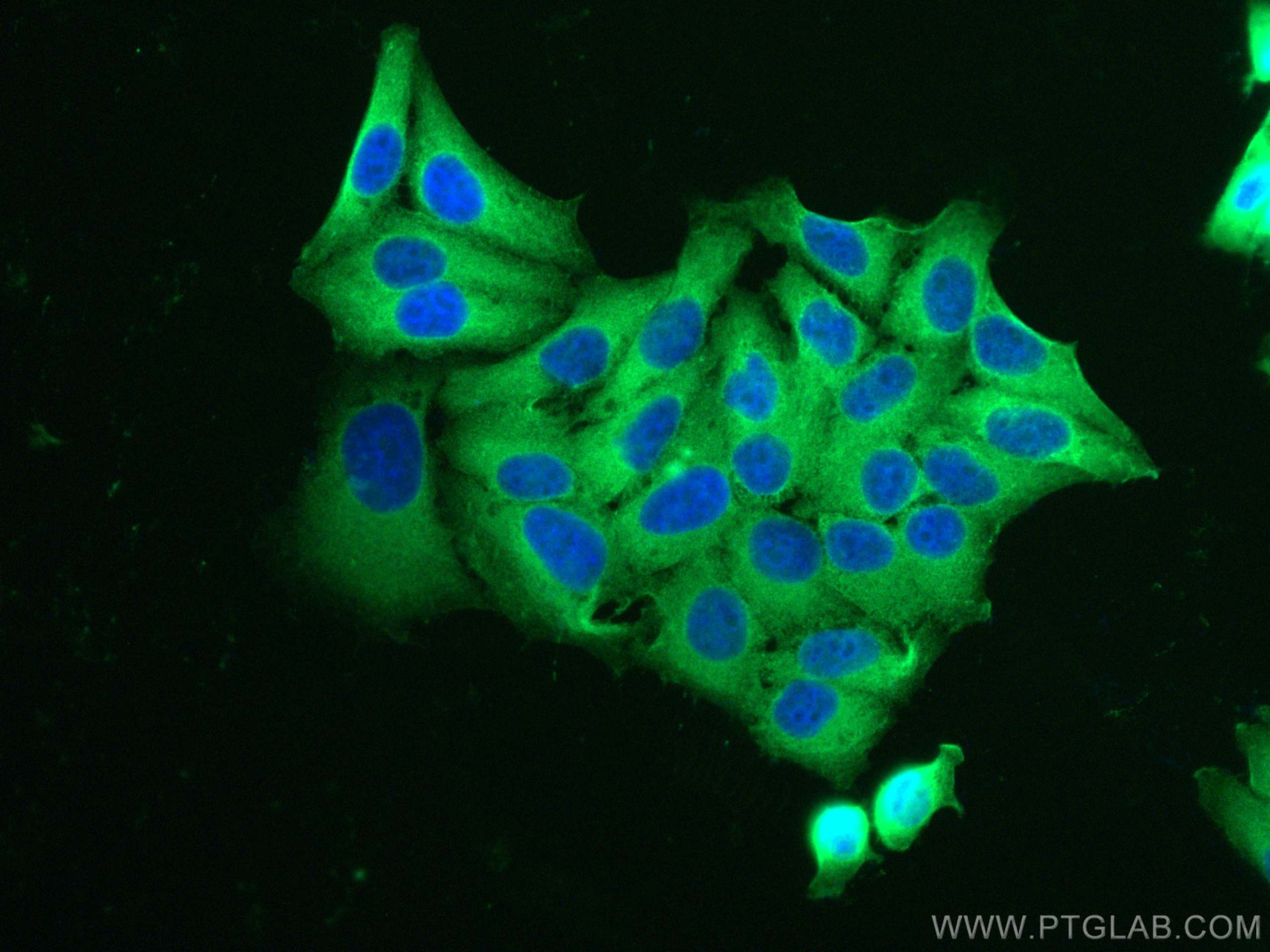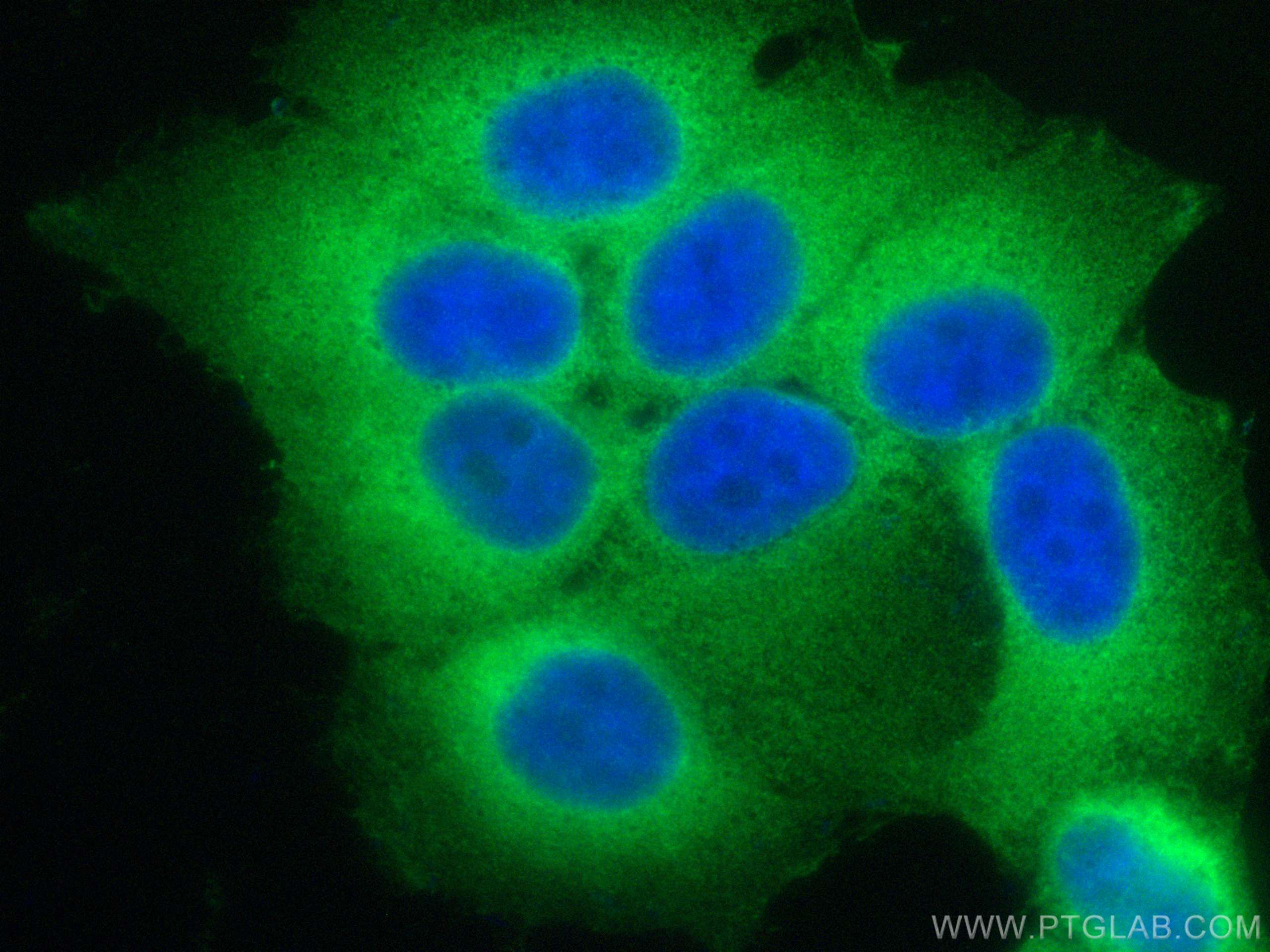DNAJA1 Monoklonaler Antikörper
DNAJA1 Monoklonal Antikörper für IF
Wirt / Isotyp
Maus / IgM
Getestete Reaktivität
human, Maus, Ratte
Anwendung
IF
Konjugation
CoraLite® Plus 488 Fluorescent Dye
CloneNo.
1B10A10
Kat-Nr. : CL488-67184
Synonyme
Galerie der Validierungsdaten
Geprüfte Anwendungen
| Erfolgreiche Detektion in IF | HepG2-Zellen |
Empfohlene Verdünnung
| Anwendung | Verdünnung |
|---|---|
| Immunfluoreszenz (IF) | IF : 1:50-1:500 |
| It is recommended that this reagent should be titrated in each testing system to obtain optimal results. | |
| Sample-dependent, check data in validation data gallery | |
Produktinformation
CL488-67184 bindet in IF DNAJA1 und zeigt Reaktivität mit human, Maus, Ratten
| Getestete Reaktivität | human, Maus, Ratte |
| Wirt / Isotyp | Maus / IgM |
| Klonalität | Monoklonal |
| Typ | Antikörper |
| Immunogen | DNAJA1 fusion protein Ag2284 |
| Vollständiger Name | DnaJ (Hsp40) homolog, subfamily A, member 1 |
| Berechnetes Molekulargewicht | 397 aa, 45 kDa |
| Beobachtetes Molekulargewicht | 45 kDa |
| GenBank-Zugangsnummer | BC008182 |
| Gene symbol | DNAJA1 |
| Gene ID (NCBI) | 3301 |
| Konjugation | CoraLite® Plus 488 Fluorescent Dye |
| Excitation/Emission maxima wavelengths | 493 nm / 522 nm |
| Form | Liquid |
| Reinigungsmethode | Euglobulin-Präzipitation |
| Lagerungspuffer | BS mit 50% Glyzerin, 0,05% Proclin300, 0,5% BSA, pH 7,3. |
| Lagerungsbedingungen | Bei -20°C lagern. Vor Licht schützen. Nach dem Versand ein Jahr stabil. Aliquotieren ist bei -20oC Lagerung nicht notwendig. 20ul Größen enthalten 0,1% BSA. |
Hintergrundinformationen
DNAJA1 is a member of the DnaJ proteins (also known as Hsp40 or Hsc40) which are cochaperones to DnaK (Hsp70) and function to modulate protein assembly, disassembly, and translocation. DNAJA1 has been reported to get involved in various processes, including virus infection, tau clearance, and mutant p53 degradation.
Protokolle
| Produktspezifische Protokolle | |
|---|---|
| IF protocol for CL Plus 488 DNAJA1 antibody CL488-67184 | Protokoll herunterladen |
| Standard-Protokolle | |
|---|---|
| Klicken Sie hier, um unsere Standardprotokolle anzuzeigen |



